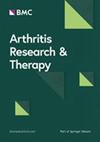A diagnostic model for assessing the risk of osteoporosis in patients with rheumatoid arthritis based on bone turnover markers
IF 4.9
2区 医学
Q1 Medicine
引用次数: 0
Abstract
The risk of developing osteoporosis (OP) is increased in patients with rheumatoid arthritis (RA), which is associated with poorer prognosis and higher mortality. Many patients with RA may experience bone loss early in the disease course. Therefore, timely assessment of the risk of OP in RA patients is essential. This is a retrospective study in which we collected information from 500 RA patients who underwent bone mineral density assessments at Longhua Hospital, Shanghai University of Traditional Chinese Medicine, from January 2018 to December 2022. Based on the data collection timeline, the first 70% of patients were assigned to the training set, while the remaining 30% were included in the validation set. The model was established using the training set and evaluated through plotting of the receiver operating characteristic curves, calibration curves, and clinical decision curves. Internal validation was performed by resampling the training set data 1,000 times using the bootstrap method, while internal hold-out validation was conducted using the validation dataset. Ultimately, six variables were identified as independently associated with RA combined with OP (RA-OP): female sex, age, beta C-terminal cross-linked peptide (β-CTX), anti-cyclic citrullinated peptide antibody (ACPA), triglycerides (TG), and N-terminal propeptide of type I procollagen (PINP). The regression equation for the model is as follows: Logistic (RA-OP) = -8.703 + 0.946*female + 0.053*age + 0.004*β-CTX + 0.001*ACPA + 0.6*TG-0.008*PINP. The model demonstrated good discrimination (AUC = 0.819, 95% CI: 0.775–0.863) and calibration. In both internal and internal hold-out validation, the model also performed well, with AUC values of 0.814 (95% CI: 0.772–0.864) and 0.772 (95% CI: 0.697–0.847), respectively. Clinical decision curves indicated that the model outperformed both extreme curves, suggesting good clinical utility. Our model is user-friendly and has shown good predictive performance in both internal and internal hold-out validation, offering new insights for the early screening and treatment of OP risk in RA patients.基于骨转换标志物评估类风湿关节炎患者骨质疏松风险的诊断模型
类风湿性关节炎(RA)患者发生骨质疏松症(OP)的风险增加,这与预后较差和死亡率较高有关。许多类风湿性关节炎患者在疾病早期可能会出现骨质流失。因此,及时评估RA患者OP的风险至关重要。这是一项回顾性研究,我们收集了2018年1月至2022年12月在上海中医药大学龙华医院接受骨矿物质密度评估的500名RA患者的信息。根据数据收集时间线,将前70%的患者分配到训练集,其余30%纳入验证集。利用训练集建立模型,并通过绘制受试者工作特征曲线、校准曲线和临床决策曲线对模型进行评价。内部验证通过使用bootstrap方法对训练集数据重新采样1000次进行,而内部保留验证使用验证数据集进行。最终,我们确定了与RA合并OP独立相关的6个变量(RA-OP):女性性别、年龄、β- c端交联肽(β-CTX)、抗环瓜氨酸肽抗体(ACPA)、甘油三酯(TG)和I型前胶原n端前肽(PINP)。模型回归方程为Logistic (RA-OP) = -8.703 + 0.946*female + 0.053*age + 0.004*β-CTX + 0.001*ACPA + 0.6*TG-0.008*PINP。该模型具有良好的判别性(AUC = 0.819, 95% CI: 0.775-0.863)和校正性。在内部和内部hold-out验证中,模型也表现良好,AUC值分别为0.814 (95% CI: 0.772 - 0.864)和0.772 (95% CI: 0.697-0.847)。临床决策曲线表明,该模型优于两种极值曲线,具有良好的临床应用价值。我们的模型用户友好,在内部和内部hold-out验证中都显示出良好的预测性能,为RA患者OP风险的早期筛查和治疗提供了新的见解。
本文章由计算机程序翻译,如有差异,请以英文原文为准。
求助全文
约1分钟内获得全文
求助全文
来源期刊

Arthritis Research & Therapy
RHEUMATOLOGY-
CiteScore
8.60
自引率
2.00%
发文量
261
审稿时长
14 weeks
期刊介绍:
Established in 1999, Arthritis Research and Therapy is an international, open access, peer-reviewed journal, publishing original articles in the area of musculoskeletal research and therapy as well as, reviews, commentaries and reports. A major focus of the journal is on the immunologic processes leading to inflammation, damage and repair as they relate to autoimmune rheumatic and musculoskeletal conditions, and which inform the translation of this knowledge into advances in clinical care. Original basic, translational and clinical research is considered for publication along with results of early and late phase therapeutic trials, especially as they pertain to the underpinning science that informs clinical observations in interventional studies.
 求助内容:
求助内容: 应助结果提醒方式:
应助结果提醒方式:


